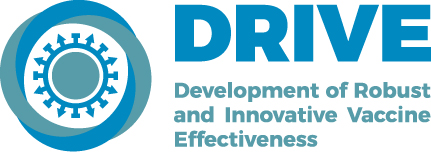The COVID-19 pandemic has impacted influenza surveillance around the world. Although the first pandemic wave reached Europe in February 2020, only overlapping with the 2019/2020 influenza season in the last couple of weeks, DRIVE’s study network was inevitably impacted. An analysis of all the Challenges and Adaptation from the DRIVE perspective has been published by DRIVE partners in the International Journal for Environmental Research and Public Health (IJERPH) on 5 January 2021.
Experience from the DRIVE Project
COVID-19 and influenza are both respiratory infectious diseases with similar clinical presentation. As a consequence, the COVID-19 pandemic directly impacted influenza surveillance systems and data collection at the DRIVE study sites.
With healthcare systems pushed to their limits, authorities and governments introduced measures to reduce virus spread, dramatically affecting the transmission of other infectious diseases like influenza. The interruption of the collection of influenza swabs in mid-March of 2020 in some study sites have had a direct effect on the project workflow. Altogether, these events have urged DRIVE to account for the COVID-19 pandemic in its Influenza Vaccine Effectiveness (IVE) study platform.
The publication explains how DRIVE has updated both the Statistical Analysis Plan (SAP) and the IVE results report for the 2019/2020 season to account for the altered COVID-19 case management and influenza surveillance among study sites (i.e. study period and sensitivity analysis).
The article also provides the experiences of two DRIVE study sites in 2019/2020, detailing the management of the DRIVE study during the COVID-19 pandemic as well as the challenges faced and the subsequently designed solutions. Each of the study sites approached the DRIVE study in response to the COVID-19 pandemic in different and unique ways: CIRI-IT hospital network in Italy had to deal with an intense COVID-19 outbreak, whereas HUS Jorvi Hospital in Finland faced a moderate COVID-19 outbreak.
On another note, and anticipating the impact of COVID-19 on the IVE Studies for the upcoming influenza season, the DRIVE Study Platform has explored adaptation strategies for the 2020/2021 season. This includes using it as a feasibility study for discussion on how COVID-19 variables can be collected by study sites and implemented in the study platform to better understand how COVID-19 would impact brand-specific IVE. Also, DRIVE has updated its test-negative design protocol for the 2020/2021 season in order to account for several COVID-19 particularities including some new variables such as COVID-19 positivity in the current season (based on Reverse-transcriptase Polymerase chain reaction (RT-PCR) test results). Finally, triage strategies will differ among sites in the 2020/2021 season. The majority of the DRIVE study sites have established a common triage for all Severe Acute Respiratory Infection (SARI)/Influenza-like Illness (ILI) RT-PCR. However, other sites will prioritize SARS-CoV-2 testing, and only the swabs testing negative for SARS-CoV-2 will be stored for subsequent influenza testing.
In the future, as mentioned in the article, DRIVE proposes to leverage the COVID-19 experience during the 2019/2020 and 2020/2021 seasons to design a proposal for a post-DRIVE study platform for influenza and other potential respiratory diseases (e.g. COVID-19, respiratory syncytial virus (RSV)) by developing a proof of concept. This proof of concept will consider the feasibility of adapting the DRIVE influenza study platform for the evaluation of future COVID-19 vaccines and will propose a Public Private Partnership (PPP) model to create a common study platform to monitor the effectiveness of vaccines intending to prevent several respiratory infectious diseases.
The publication has currently received more than 500 visits. Read the full text here.
Contact us for any question or further discussion related to the article.

